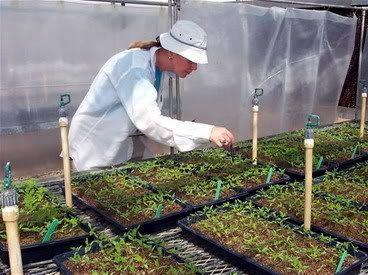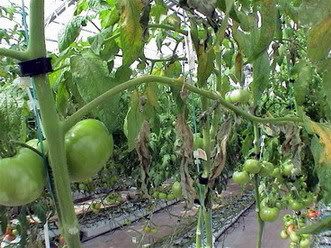Prior to 1970, the greenhouse vegetable industry was located near the high-population centers, mainly in the states of Ohio, Michigan, and Massachusetts. In 1867, a committee of the Massachusetts Horticultural Society noted the rapid growth of vegetables under glass and suggested that prizes be offered to encourage the practice (Massachusetts Horticultural Society, 1880). All commercial production was in soil.
In 1965, Ohio was the major greenhouse vegetable region in the United States, with more than 240 ha. After 1970, with the rapid rise in energy cost to heat greenhouses, along with the construction of superhighways to transport fresh produce from southern regions, Ohio became an importer of tomatoes. Today, the greenhouse vegetable industry in these eastern states has collapsed and is insignificant.
With the superhighways in America, the energy required to transport fresh vegetables from the southern region of the United States and from Mexico is less than that required to heat a greenhouse. For example, in conventional greenhouses in Ohio, nearly 40,000 kcal of energy are required to grow 1 kg of tomatoes vs. only 4000 kcal in the open field. Shipping 1 kg of tomatoes 5000 km north by semi-truck expends only 1865 kcal of energy.

Along with the light factor are temperature considerations, especially in the southwest desert. For example, if tomatoes are selected as the crop to be grown year-round, low elevations must be avoided, due to the difficulty in maintaining desirable temperatures in the greenhouse during late spring and early fall, even with fan and pad cooling. In the late 1960s, hydroponic installations were installed in low-elevation regions in Texas and Arizona. In most regions of Texas, evaporative cooling is ineffective due to high ambient humidity. Escalating energy costs in the 1970s added to the costs of cooling in the summer, as well as heating during the winter months. This, coupled with insect and disease problems and high amortization costs, especially when growers were purchasing turnkey greenhouse systems rather than building their own growing system, caused most hydroponic installations to fail financially. This was true not only in Texas and Arizona, but throughout the United States.
Given the high cost of fan and pad equipment, future hydroponic growers will be selecting sites at specific elevations that have summer temperatures that do not require evaporative cooling, therefore sparing the costs of such cooling equipment. At the same time, an elevation should be selected that is not too high in order to avoid high heating costs in winter. In southern Arizona, such an elevation for tomato production would range from 1250 to 1675 m and for cucumber production, 600 to 1250 m.
Proposed as an alternative to fan and pad cooling is high-pressure fog systems. Recent experiences have proven this method of cooling desirable if the feed water is absolutely free of any undissolved or dissolved solids. It is important for the greenhouse structure to have ridge vents to accommodate ample air exchange for prescribed temperature and humidity control. Any time a grower deviates from the prescribed growing temperatures for a given crop, yields will be lowered. The more a grower has to cool or heat a greenhouse in order to maintain recommended temperatures, the greater the cost to operate the facility, therefore lessening financial return. If evaporative cooling systems are used, locating the greenhouse in a region of low outdoor humidity is important.

Especially important is selection of a site free of insects that might be vectors for severe virus diseases. Early hydroponic ventures did not consider this. In the United States and Mexico, sites were selected where white flies existed. These can be a vector of gemini viruses, which are extremely lethal to most solanaceous and cucurbit crops. Screens on air intakes do not always work, as the white fly almost always gains entry into the growing area. Growing in regions where there are mild winters normally increases the incidence of insects and diseases due to the continued life cycle of the pest. Selecting a site that isn't already a major producer of vegetable crops is also advisable.
University of Arizona







